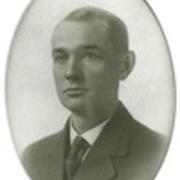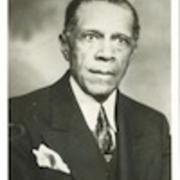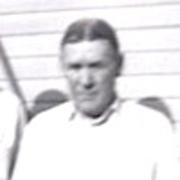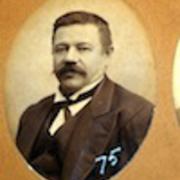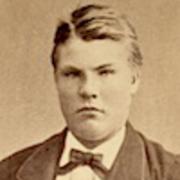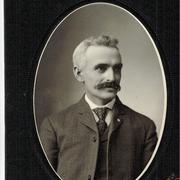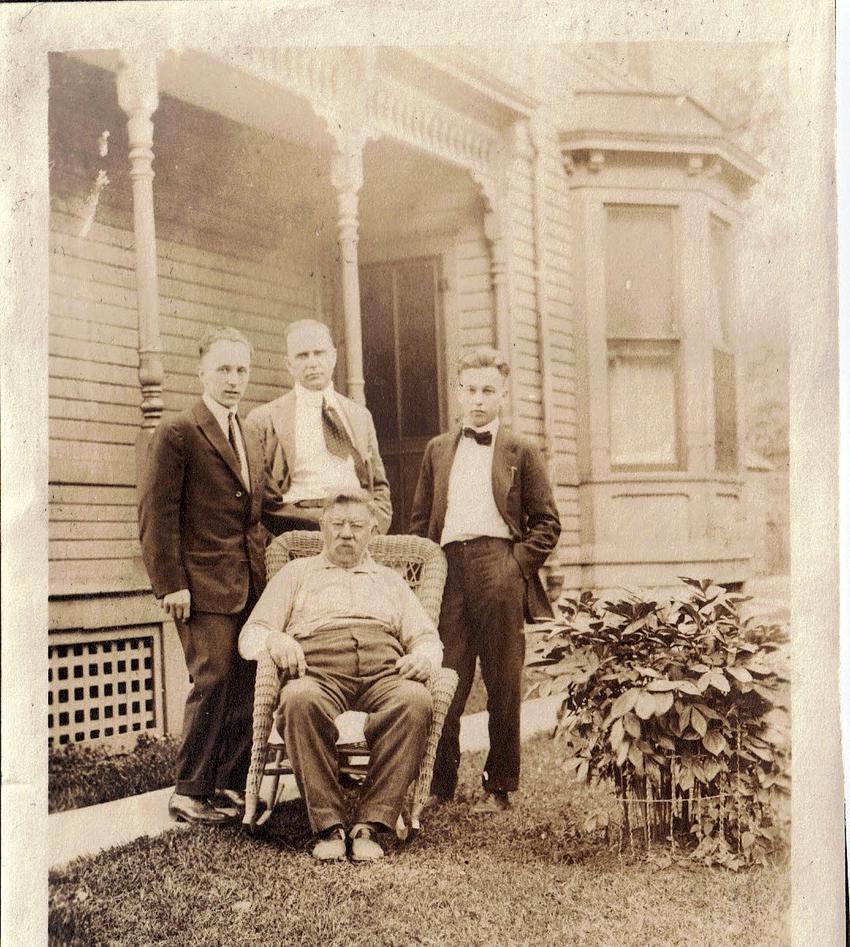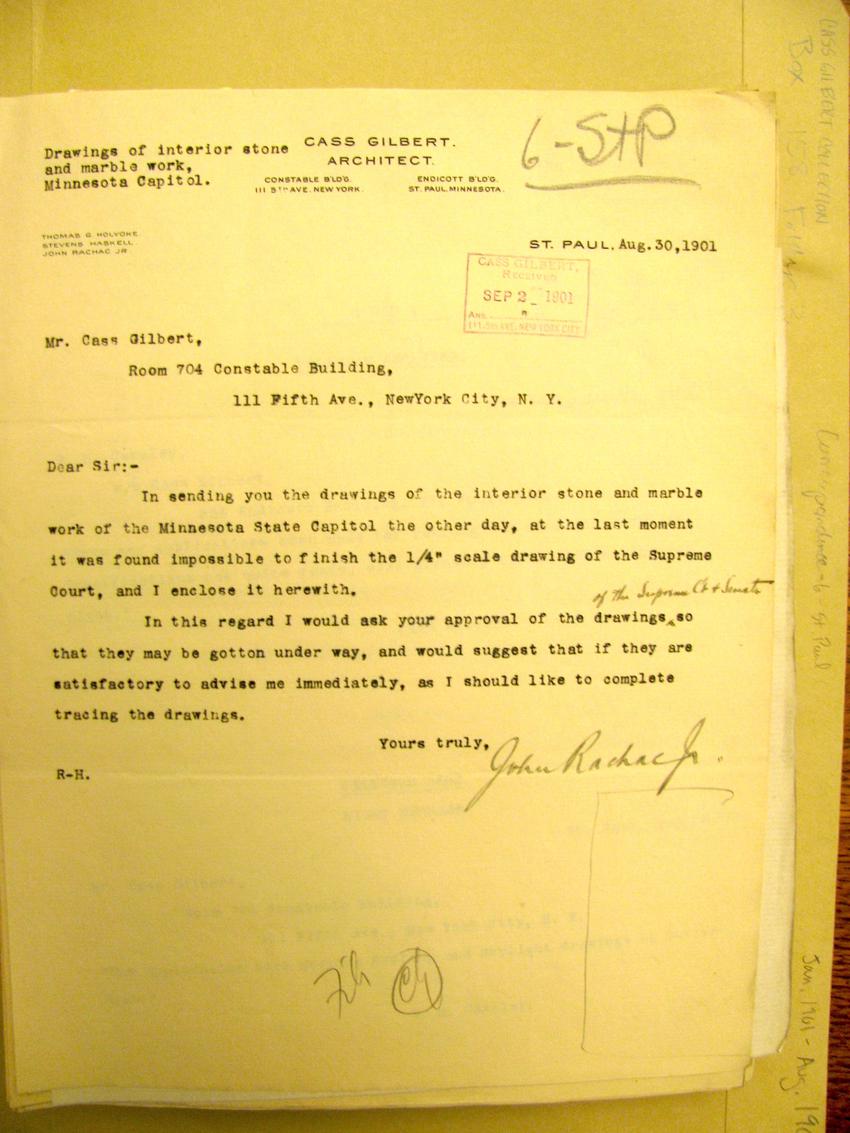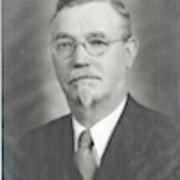
John Rachac (Rockart), Jr.
by John Sielaff
While carpenter John Rachač was working at the Capitol construction his oldest son, John Jr., was also involved in the construction industry working as draftsmen in the office of Cass Gilbert, the architect of the Capitol. John Jr., who had won prizes in his last year at St. Paul High School for architectural drafting, had gone to work for the firm of Gilbert and Taylor in 1889 at the age of 16. At the time secondary education was not a necessary requirement for employment in the field. Gilbert himself had studied at M.I.T. for only 9 months before beginning his apprenticeship in New York. The 1880’s were boom years for Gilbert and Taylor, designing homes and churches in St. Paul, and by 1889 the firm was working on its first big commercial contract, the Endicott Building, in downtown St. Paul. The economic downturn of the 1890’s, however, put a halt to the construction industry. Gilbert’s partner, James Taylor, left town to find work elsewhere, and Gilbert carried on alone though on a smaller scale. To build up a client base he joined the Minnesota Club and met James J. Hill there. The same year Rachač Sr. was working on the Hill house, his son was working in Gilbert’s office as the architect was designing the fence, gates and powerhouse for the mansion. This led to Gilbert’s work on the new St. Paul Seminary for Archbishop John Ireland, which Hill financed. But Gilbert found Hill’s imperious attitude demeaning. Once, when they were arguing about the budget for the Seminary job, Hill opened the vault in the new Summit Avenue home to show off a large cache of diamonds and jewels, just to demonstrate who was calling the shots and why. Young Rachač worked for Gilbert through all these years except 1894 when he listed the Public Library as his employer.
During these slim years Gilbert had his eyes on the Capitol job and was positioning himself, knowing this could be the turning point in his career. In 1891, he got on the national board of the American Institute of Architects and in 1894 became the president of the Minnesota chapter. In 1893 Minnesota Governor Knute Nelson appointed a Commission to oversee the construction of a new capitol building and the chairman happened to be an old family friend of Gilbert’s, Channing Seabury. But when the job was put out for bids in 1894, the legislature had imposed several restrictions: a budget cap of 2 million and architects fees of 2 ½ percent. Gilbert had to meet with Seabury to explain that he and most other A.I.A. architects would be boycotting the competition. Although there were 56 entries the Commission judged them all to be inadequate and a second round of bidding was held in 1895 using the recommendations of Gilbert and the A.I.A. which required a higher commission and complete oversight of the construction process by the architect. There were five finalists chosen by the Commission and Gilbert was the eventual victor. The final cost of the project would be 4 ½ million.
John Rachač Jr. was present at the groundbreaking in 1896, and in 1898, when the cornerstone of the Capitol was set, the Rachač family got a special invitation to the ceremony and John Jr.’s name was included in the list of Gilbert’s associates included in the cornerstone box. Gilbert’s office stationary of these years lists John Rachač as one of the three associates in the firm along with Thomas Holyoke and George Carsley. In May of 1900, the young architect, with financial aid and loans from Gilbert, traveled to Paris to study at the Ecole des Beaux Arts. After he got over his homesickness, he wrote to Gilbert that he really wanted to study there for two more years and get into the upper level classes “where the really big work and design commence.” But Gilbert, who was financing the schooling and keeping Rachač’s job open in St. Paul, instead advised him to tour Italy where he could see firsthand the architecture Gilbert was trying to reproduce in America and come back home by July 1901. Shortly after his return, Rachač demonstrated his proficiency by drawing the plans for the complicated cantilevered oval stairs in the northeast corner of the Capitol building. Gilbert had opened a New York office in 1899 and was spending most of his time there so the responsibilities of those working in the St. Paul office increased. Rachač was kept busy there, as well as traveling to oversee work in St. Louis. Towards the end of the project, he was working on plans that his father would soon execute in the new building. This must have made for some interesting conversations around the Rachač dinner table. Maybe Gilbert was recalling this when, a few years later, he decried new construction practices, “The (general contractors) have been able to force the sub-contractor to a lower price, consequently, they have introduced a lower grade of work, and have succeeded in keeping the architect at arm’s length from the man who does the work….As a rule it should be the sentiment of the architects of the country to deal with the men that do the work.” After the Capitol was completed, John Jr. moved from the family home on Harrison to New York, Americanized his name to John Rockart at Gilbert’s insistence, and worked with Gilbert for 25 more years as the office manager of the firm. Channing Seabury’s daughter, Edith, remembered Rockart in 1936 as “the man who probably knows more about the Capitol than anyone now living…. Mr. Gilbert many times said he never could have done what he did without Mr. Rockart.” Rockart worked with Gilbert on many prominent projects including the Woolworth Building in New York, the Virginia State Capitol and finally, the U.S. Supreme Court building which Rockart completed after Cass Gilbert’s death. The name that he insisted on having inscribed in the vestibule of that building is “John Rachac Rockart.”
